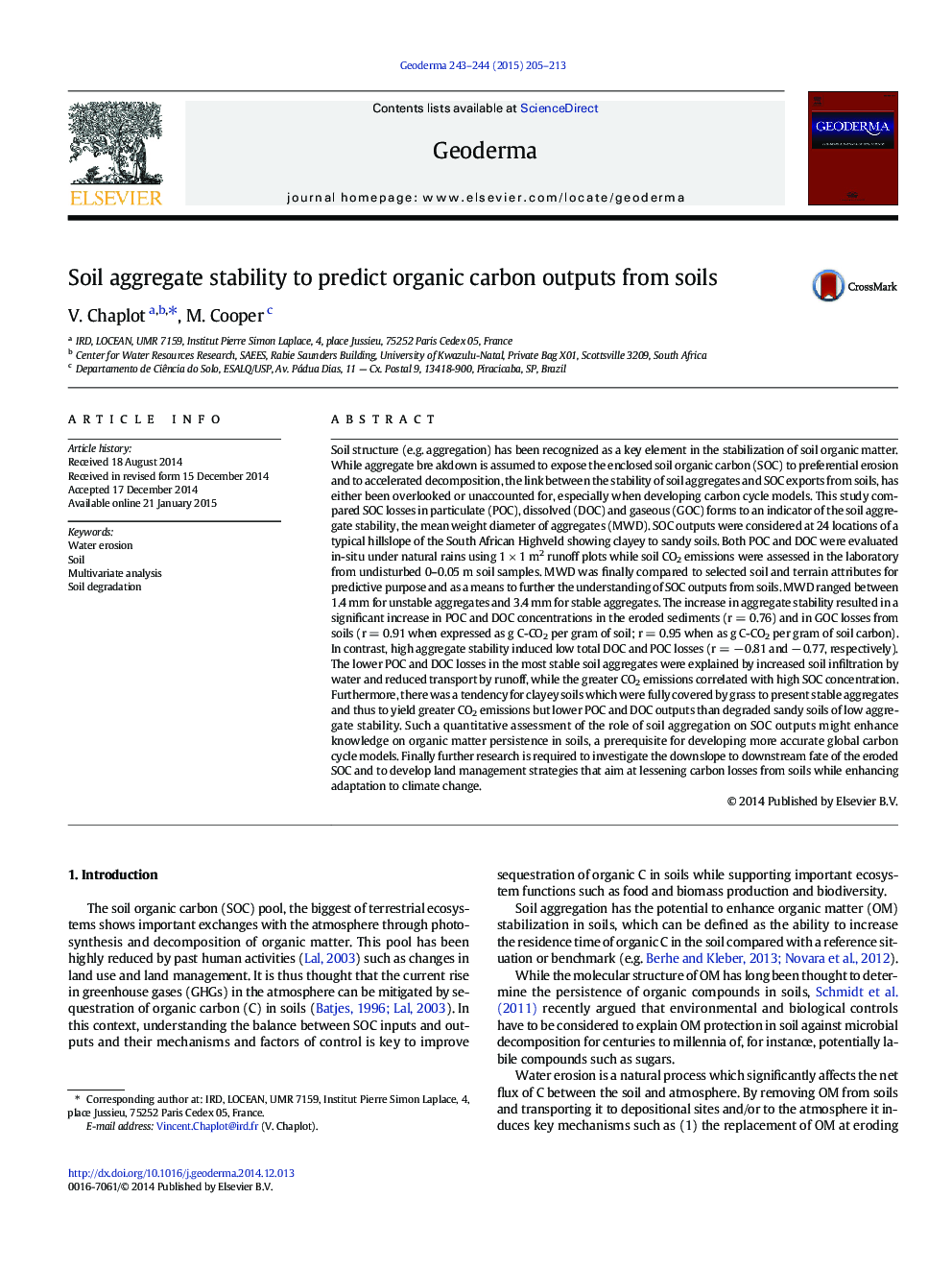| کد مقاله | کد نشریه | سال انتشار | مقاله انگلیسی | نسخه تمام متن |
|---|---|---|---|---|
| 4573220 | 1629464 | 2015 | 9 صفحه PDF | دانلود رایگان |
• POC and DOC content increased as the stability of soil aggregates increased.
• Stable aggregates yielded low losses of particulate and dissolved carbon but high CO2 emissions.
• Low particulate and dissolved losses were explained by increased soil infiltration by water and reduced transport by runoff.
• High CO2 emissions correlated with high top-soil carbon content.
Soil structure (e.g. aggregation) has been recognized as a key element in the stabilization of soil organic matter. While aggregate bre akdown is assumed to expose the enclosed soil organic carbon (SOC) to preferential erosion and to accelerated decomposition, the link between the stability of soil aggregates and SOC exports from soils, has either been overlooked or unaccounted for, especially when developing carbon cycle models. This study compared SOC losses in particulate (POC), dissolved (DOC) and gaseous (GOC) forms to an indicator of the soil aggregate stability, the mean weight diameter of aggregates (MWD). SOC outputs were considered at 24 locations of a typical hillslope of the South African Highveld showing clayey to sandy soils. Both POC and DOC were evaluated in-situ under natural rains using 1 × 1 m2 runoff plots while soil CO2 emissions were assessed in the laboratory from undisturbed 0–0.05 m soil samples. MWD was finally compared to selected soil and terrain attributes for predictive purpose and as a means to further the understanding of SOC outputs from soils. MWD ranged between 1.4 mm for unstable aggregates and 3.4 mm for stable aggregates. The increase in aggregate stability resulted in a significant increase in POC and DOC concentrations in the eroded sediments (r = 0.76) and in GOC losses from soils (r = 0.91 when expressed as g C-CO2 per gram of soil; r = 0.95 when as g C-CO2 per gram of soil carbon). In contrast, high aggregate stability induced low total DOC and POC losses (r = − 0.81 and − 0.77, respectively). The lower POC and DOC losses in the most stable soil aggregates were explained by increased soil infiltration by water and reduced transport by runoff, while the greater CO2 emissions correlated with high SOC concentration. Furthermore, there was a tendency for clayey soils which were fully covered by grass to present stable aggregates and thus to yield greater CO2 emissions but lower POC and DOC outputs than degraded sandy soils of low aggregate stability. Such a quantitative assessment of the role of soil aggregation on SOC outputs might enhance knowledge on organic matter persistence in soils, a prerequisite for developing more accurate global carbon cycle models. Finally further research is required to investigate the downslope to downstream fate of the eroded SOC and to develop land management strategies that aim at lessening carbon losses from soils while enhancing adaptation to climate change.
Journal: Geoderma - Volumes 243–244, April 2015, Pages 205–213
